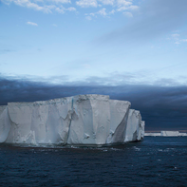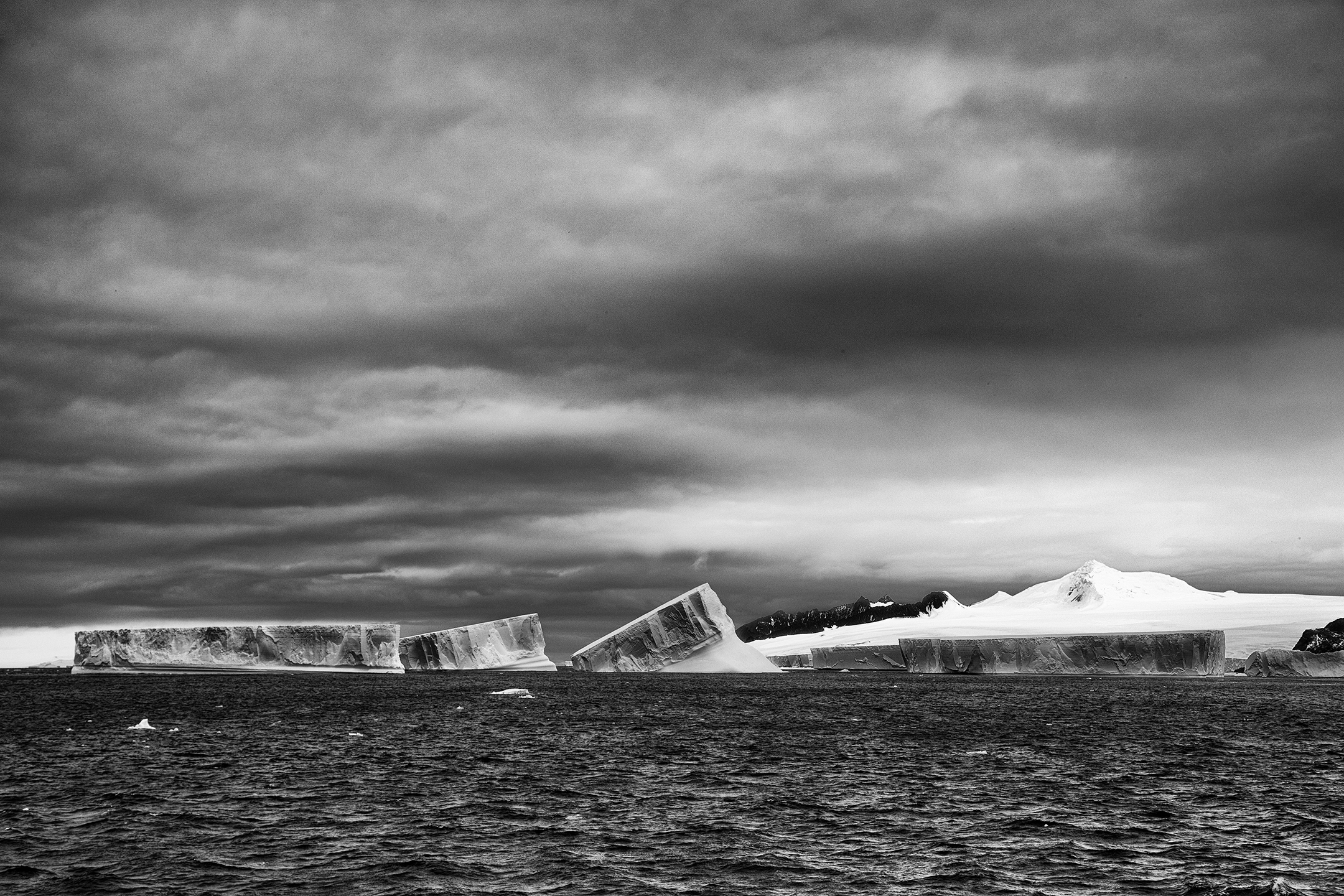Having completed our morning excursion to Brown Bluff, the Sea Explorer is now heading north-west through the Antarctic Sound en-route to our next landing site, Neko Harbour, on the western side of the Antarctic Peninsula. This is no ordinary sea excursion; an incredible number of tabular icebergs, both large and small, are omnipresent. In fact, this is known as "Iceberg Alley," aptly named by team members of the Swedish South Polar Expedition of 1903.
The Antarctic Sound is surrounded by the islands of D'Urville, Joinville and Dundee. Its name derives from a Swedish ship, Antarctic, that sank in these seas during the 1903 expedition of Otto Nordenskjöld. In days past, many times I would rest or post process some of my photos during periods of travel. This is not happening this afternoon, however. All ship passengers are lining the decks to photograph the astonishing assortment of floating ice that is visible in all directions. I'm told by our staff that this is the most impressive display of icebergs that we are likely to see on our journey.
So how did these ice mountains materialize in the first place? My research informs me that large pieces of freshwater ice disengage from a glacier or ice shelf and subsequently become frozen in pack ice. This nidus then drifts into shallower waters where, through a process referred to as "seabed gouging," it becomes furrowed as spring run-off water flows through cracks and seals breathing holes.
As the Sea Explorer navigates through this stretch of water that is 35 miles long and up to 14 miles wide, I see the Trinity Peninsula, the tip of Antarctica. Imagining how Nordenskjöld felt when the Antarctic became trapped and crushed by ice in these waters, it's obvious to me how treacherous things can become in this drink during inclement weather.
Some of these icebergs are huge, appearing like giant cliffs. Smaller pieces, however, referred to as "bergy bits" and "growlers," are noticeable everywhere. These are medium to large ice fragments that result from a large iceberg that has broken up. The growlers are roughly the size of a motor vehicle, extending less than 3 feet above the sea surface and occupying a surface area in the neighborhood of 215 square feet.
Classified by by shape, icebergs are considered either tabular or non-tabular. The tabular variety have steep sides with flat tops, whereas, non-tabulars form in a variety of shapes, with domes and spires. As we cruise past multiple tabular icebergs, I'm told by our guide that these structures can reach more than 70 miles in length and up to 900 feet in depth. Amazingly, they can last for 10 years and drift for thousands of miles, propelled by wind and current.
I feel like I am in an enormous outdoor museum that always changes with time. It is highly unlikely that I will ever be back here again. Despite this, I won't be forgetting tabular icebergs any time soon.




